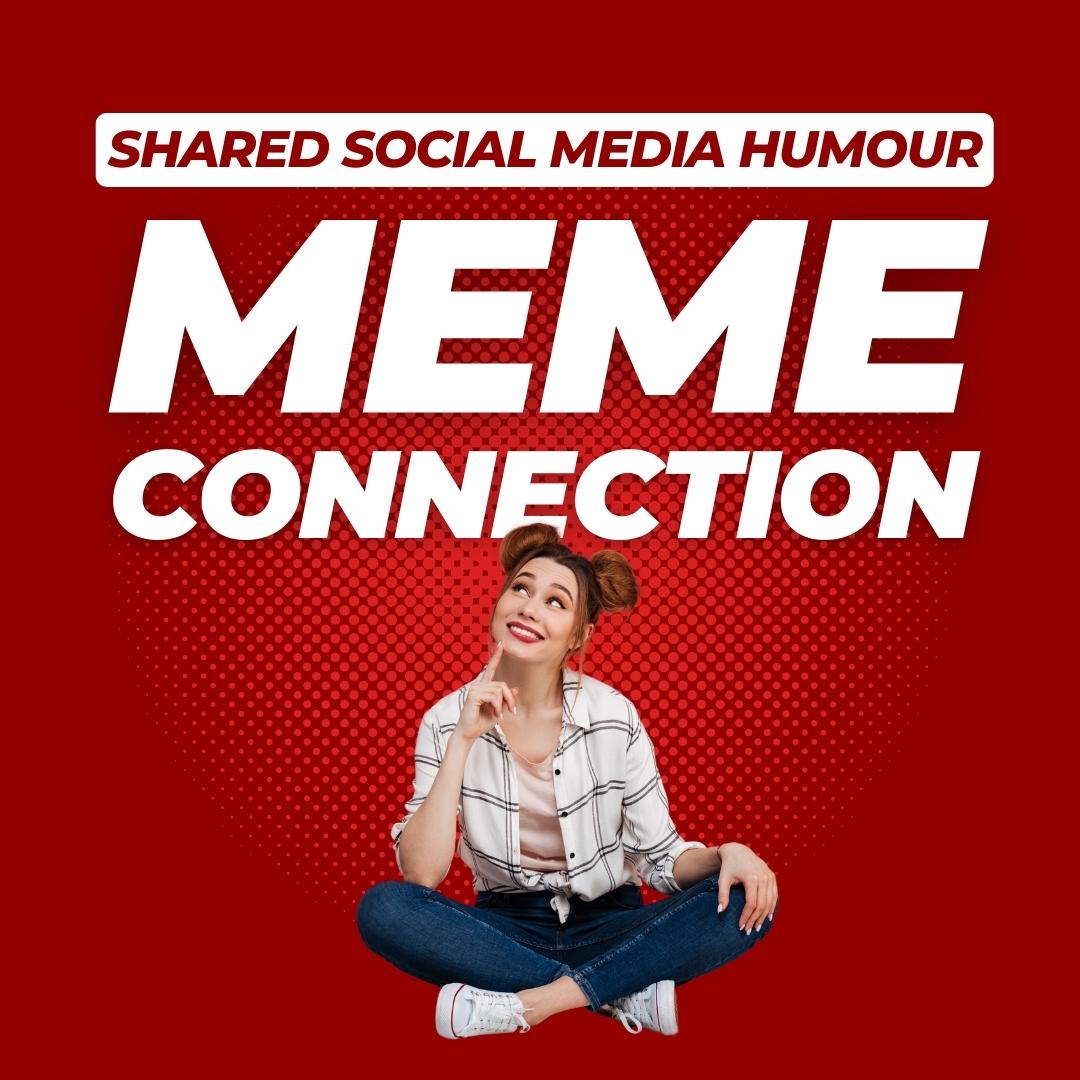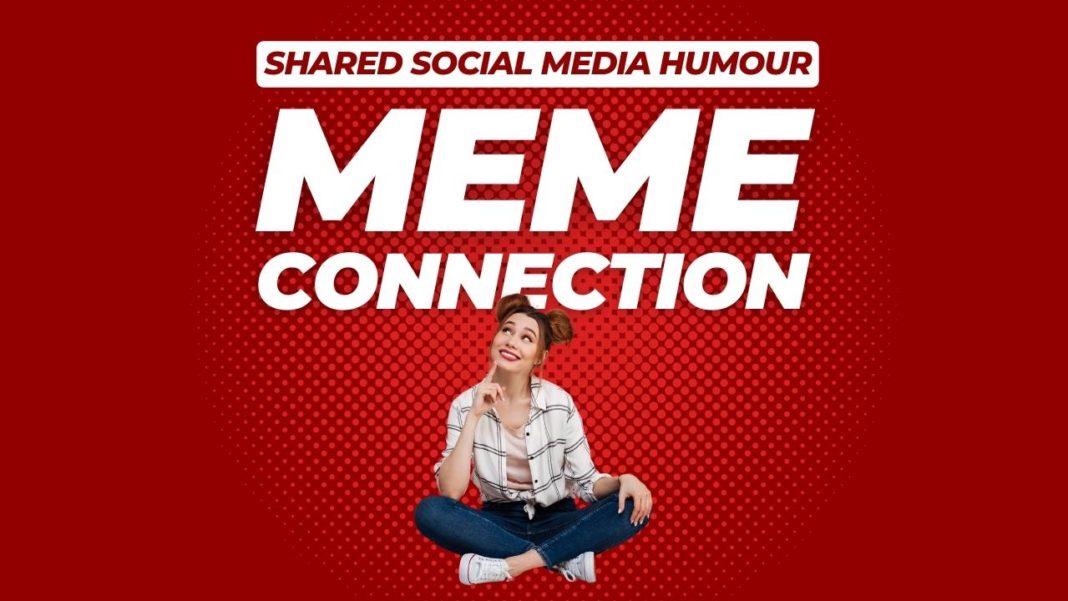Memes have transitioned from internet oddities to a pervasive form of communication across social media platforms. Initially coined by Richard Dawkins in 1976, the term “meme” referred to an idea, behavior, or style that spreads within a culture. In the digital age, this has evolved to encompass viral videos, images, and text that are rapidly shared, often mutating as they spread. This phenomenon has grown as platforms like Twitter, Facebook, Instagram, and more recently TikTok, have become woven into our daily lives. Memes are now a universal language of the web, used by millions to express humour, satire, and commentary in concise and relatable ways.
Beyond their entertaining value, memes have grown into a tool for connecting individuals across different backgrounds through shared cultural touchstones. They allow users to communicate complex emotions and ideas swiftly and effectively. For instance, a meme can encapsulate personal feelings on societal issues, relatable life frustrations, or universal experiences, making them a potent form of contemporary digital communication. They echo the human experience back to us, often making us laugh and think simultaneously. The ability to share and resonate with memes about diverse feelings and ideologies fosters a sense of community and shared understanding among internet users.
The shared laughter and the universality of experiences expressed through memes can act as a potent catalyst for forming bonds. On platforms where individuals interact, the exchange of memes can break down barriers and serve as an icebreaker. For many, especially the younger digital-native generations, these exchanges can blossom into deeper connections. In a world where social interactions are increasingly occurring online, shared humour through memes is not just about a fleeting chuckle but can be the foundation for profound relationships, potentially paving the way to romance. This article explores how the simple act of sharing a meme can lead to significant connections and, in some cases, love.
The Psychology Behind Humour and Attraction
The Role of Humour in Human Connections
Humour is a powerful mechanism in human interaction, known for its ability to bridge gaps and forge connections. Psychological research underscores the significance of humour in facilitating social bonding. A seminal theory in this area is the Relief Theory, suggested by Sigmund Freud, which posits that humour provides a release of psychological tension and nervous energy. Humour also supports the Social Exchange theory, which suggests that humorous interactions can increase perceived social value and attractiveness because they offer emotional rewards, reduce stress, and enhance one’s enjoyment of the interaction.
Sigmund Freud, which posits that humour provides a release of psychological tension and nervous energy. Humour also supports the Social Exchange theory, which suggests that humorous interactions can increase perceived social value and attractiveness because they offer emotional rewards, reduce stress, and enhance one’s enjoyment of the interaction.
Further studies reinforce the idea that laughter, stimulated by humour, releases endorphins, promoting feelings of happiness and relaxation. This neurochemical shift not only reduces stress but also fosters a sense of closeness and bonding among those sharing the humorous moment. Therefore, humour is not merely a way to evoke laughter but a critical tool for building trust and empathy, allowing people to connect on a deeper emotional level.
Humour Alignment as Compatibility Indicator
Sharing a similar sense of humour is a key marker of compatibility, often used implicitly by individuals to gauge potential romantic connections. This alignment can be particularly observable in the exchange of memes, which often encapsulate personal values, cultural references, and individual worldviews. When two people find the same things funny, it often indicates a shared perspective on life or similar values, making it a strong foundation for a potential relationship.
Research in relationship psychology has shown that couples who share a similar sense of humour are more likely to experience relationship satisfaction. In the context of meme sharing, when two individuals consistently engage with and appreciate each other’s humour, it can significantly enhance mutual attraction. This shared laughter creates a positive feedback loop in relationships, reinforcing attachment and affection.
Moreover, humour, particularly when shared through memes, allows for a unique form of self-disclosure, where individuals reveal their preferences, intelligence, and even vulnerabilities in a non-threatening way. This facilitates deeper understanding and emotional intimacy, which are critical for long-term relationship success. Thus, the playful exchange of memes might seem trivial at first glance, but it can be a profound indicator of compatibility and a precursor to more serious romantic developments.
Meme-Sharing as a Modern Courtship Ritual
Case Studies and Examples
The digital age has birthed numerous unique love stories, many of which started with the simple exchange of memes. For instance, a couple who met via a Facebook group dedicated to a popular TV show found common ground through the memes they shared about the show’s most humorous moments. Their online interactions, initially casual and humorous, led to deeper conversations, revealing shared values and interests. Eventually, these meme exchanges paved the way for a first date. Today, they credit their initial meme-sharing for breaking the ice and allowing their relationship to flourish.
Another example involves two individuals who connected over Twitter through a mutual appreciation of dark humour memes. Each meme exchange offered insights into their personal coping mechanisms and sense of humour, acting as a subtle vetting process before they decided to meet in person. Their relationship grew from a foundation of understanding and accepting each other’s perspectives, showcased through the memes they found amusing.
Mechanics of Meme Sharing in Flirting
Memes serve as an effective communication tool that conveys interest and personality in a succinct, relatable manner. In the context of flirting, memes can be particularly useful for several reasons:
- Breaking the Ice: Sharing a meme is a low-stakes way to initiate contact with someone without the pressure of crafting the perfect opening message. A well-chosen meme can convey warmth and relatability, making the sender appear approachable and witty.
- Communicating Interest: By sending memes that reflect an understanding of the other person’s interests or sense of humour, an individual demonstrates attentiveness to the recipient’s preferences, signalling personal interest and the desire to connect on a deeper level.
- Maintaining Engagement: Memes keep the conversation light and engaging, often providing new topics for discussion. This continual exchange not only maintains interest but also builds a shared private language and inside jokes, which are crucial for developing intimacy.
- Easing Communication: For many, especially those who might be shy or less verbally expressive, memes offer a way to articulate feelings or thoughts that might be harder to express through words alone. This can be particularly important in the early stages of a relationship when individuals are still gauging each other’s reactions and comfort levels.
Through these dynamics, meme-sharing evolves into a modern form of courtship, weaving together humour and personal disclosure, thus facilitating deeper connections that could potentially evolve into romantic relationships.
Challenges and Benefits of Building Relationships through Shared Humour
Potential Pitfalls
While shared humour, particularly through memes, can enhance connections and act as a catalyst for relationships, there are inherent limitations and challenges in relying solely on this form of communication for emotional connection.
- Misinterpretation of Intent: Memes, by their nature, are open to interpretation. What one person finds hilarious, another might see as offensive or insensitive. Such misunderstandings can create friction or even conflict, especially in the early stages of a relationship where mutual understanding of each other’s boundaries and sense of humour is still developing.
- Superficial Connections: Humour, especially when conveyed through memes, can sometimes mask the need for deeper, more substantive conversations. Relationships that rely excessively on memes for communication might struggle to develop emotional depth, as these exchanges can divert attention from more serious or meaningful interactions.
- Overreliance on Digital Interaction: Building a relationship predominantly through digital platforms, including meme-sharing, can lead to challenges in face-to-face interactions. Couples might find it difficult to engage in direct communication or deal with real-life issues without the buffer of screens or pre-crafted images. This can impede the development of essential relationship skills such as conflict resolution and emotional support in non-digital settings.
- Cultural and Contextual Differences: Memes often rely on specific cultural or social contexts for their humour. In relationships where individuals come from different backgrounds, the context of a meme might not be as apparent or humorous to one party, leading to feelings of exclusion rather than inclusion.
Despite these challenges, the benefits of shared humour in building relationships are significant. Humour can reduce stress, foster a positive emotional climate, and enhance feelings of connection and affection between individuals. In the context of memes, this shared humour can serve as a continuous thread of joy and light-heartedness, which is vital in maintaining the vibrancy and resilience of relationships over time. It’s crucial for couples to balance meme-sharing with other forms of communication and ensure they cultivate a relationship that is rich in both humour and emotional substance.
Conclusion
Recap of Key Points
Memes have evolved from simple internet phenomena to crucial elements of modern communication, offering a unique blend of humour, cultural commentary, and personal expression. They have become instrumental in connecting individuals across vast social networks, transcending traditional barriers of geography and culture. The ability to share a laugh over a cleverly crafted meme can act as a powerful social glue, facilitating not just fleeting interactions but the formation of deep, meaningful relationships. In the digital age, where communication is often dominated by brief, impersonal exchanges, memes bring a touch of human warmth and relatability.
Future Outlook
As social media continues to shape the landscape of human interaction, the role of humour, and particularly meme culture, in relationship dynamics is poised to expand even further. The integration of advanced technologies such as AI and augmented reality into social platforms could offer even more immersive and personalised meme-sharing experiences, making humour an even more potent tool in relationship building. The evolution of meme culture will likely mirror changes in society, reflecting new values, trends, and technologies, thereby continually reshaping how relationships start and evolve.






